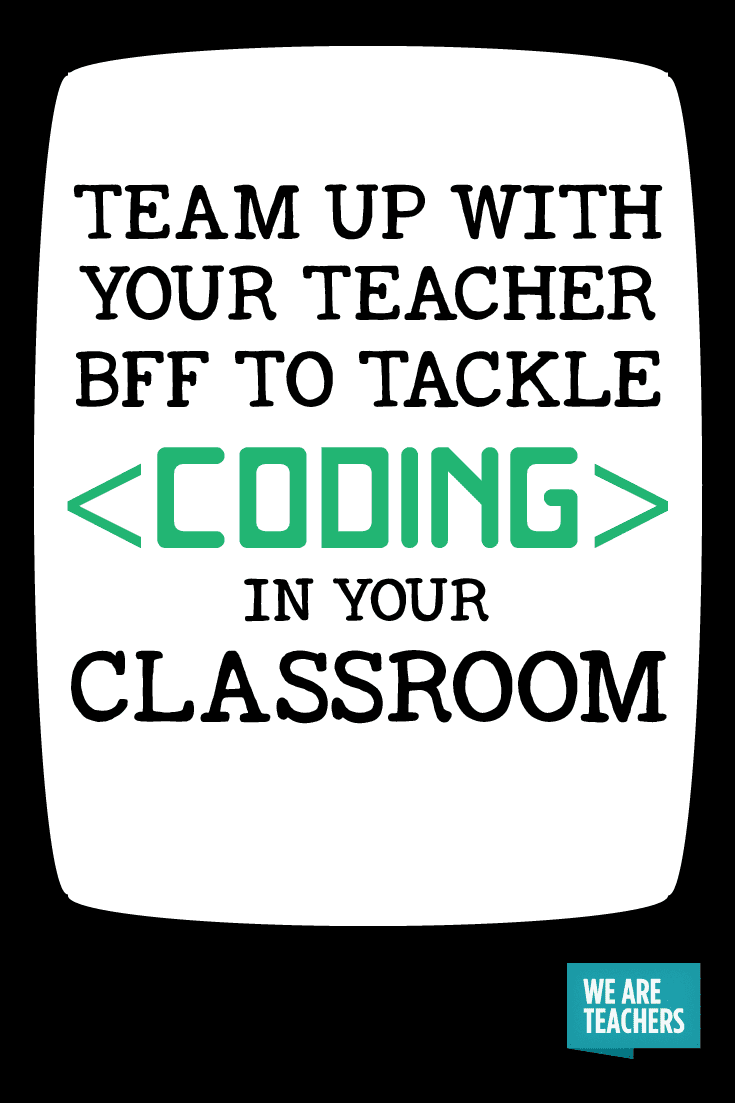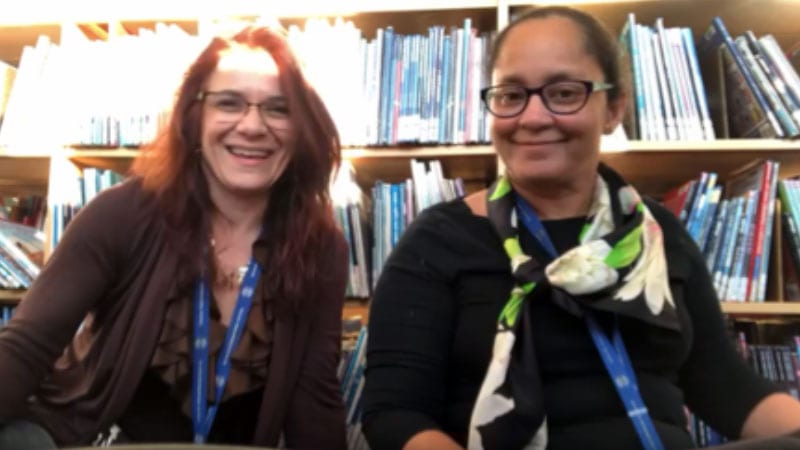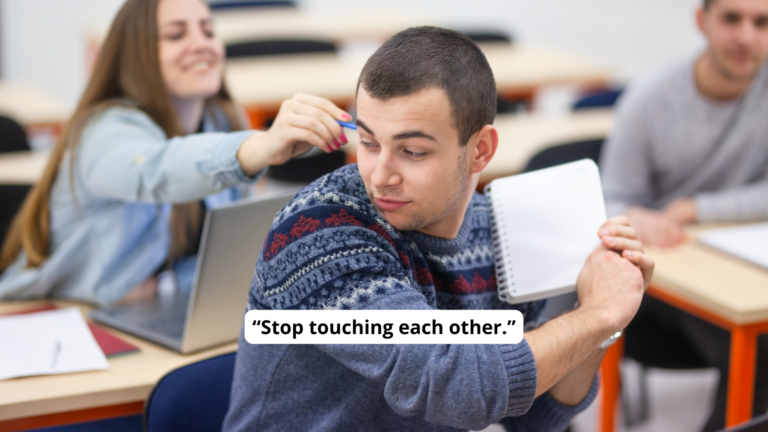Get Wonder Workshop’s eNewsletter!
If the thought of teaching coding makes you break into a sweat, you are not alone. Studies show that two-thirds of teachers fear that their students know more about technology than they do. So how can teachers like you build confidence and bridge that gap? Well, there’s help. If you are willing to take a leap into teaching coding, a safety net will appear. You can even grab a co-teacher to jump along with you!
Frederique McGirt and Carine Bouton, French-American teaching partners in the fourth and fifth grades at the Atlanta International School, knew they could lean on their students’ already-keen interest and blossoming experience in technology to get up to code. Teaching partners and friends for 16 years, Frederique and Carine recently had the opportunity to work with the Dash & Dot robots and coding curriculum from Wonder Workshop. They say that working together as a team with students and embracing failure and a try-at-all-costs attitude have changed their teaching game.
What pushed you to take this leap into robots and coding in your classroom together?
Frederique: I wouldn’t have done this without Carine! I’m the one who takes the robots home on Saturday to practice. Carine just says, “Oh, the kids are going to be fine!” … The first day [the students] programmed the robot to speak in French! It’s natural for them.
My unit of inquiry right now is how technology has changed the way people communicate. The idea is to work collaboratively with the P.E. teacher and have the kids interact with the robots in a circus performance. We also want to bring in ethical issues of technology. We want to look at things, like will robots replace people? The kids will have to discuss in class and debate.
[contextly_sidebar id=”quOV3OT4s50blvICfuMw01RzpyMsAyon”]
They plan how Dash [the robot] would move in the gymnasium. They have to think about how they move with Dash and Dot [the other robot] and interact … The students started measuring distances as to how the robots should move … This will help when they code.
Carine: We have really been focusing on growth mindset the last four years. I like that we look at things differently in the way we teach. We love to try new things.
Frederique: Now we have this growth mindset. We can’t stop!
Carine: Sometimes we say to kids, “It didn’t work today. We’re going to start over.” They are fine with that, and we laugh about it. Maybe next week we’ll see if it’s working. We have the mindset of “we try.” We see where it’s going.
That’s a great attitude to have if you’re intimidated by bringing coding into your class.
Carine: I think the curriculum [that comes with the Dash & Dot pack] is useful for teachers that are afraid or intimidated. You might not think you’d be able to do it, but this is step-by-step and great. It’s very clear.
Frederique: We have colleagues that say, “Oh, that’s great. It’s amazing what you’re doing!” But we see they are kind of afraid of doing it themselves. If you show them what the kids can do with it and [that the students] can almost do it on their own, it’s good for teachers to see that. They see the kids have a lot of fun!
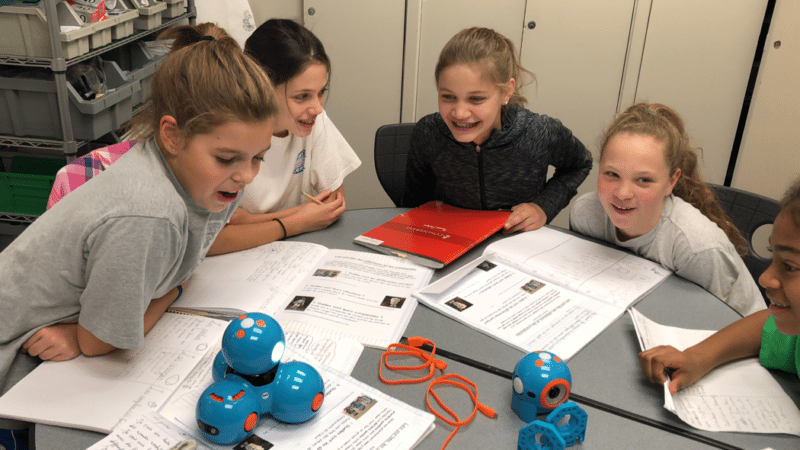
How did the class do with teamwork and taking the lead?
Frederique: The kids are given roles in the curriculum, and we broke them into small groups [consisting of]: a Lead Programmer, a Robot Wrangler, and a Documentarian. We tell the Programmer that you are the one that’s responsible for the code. And your friend is the Robot Wrangler, and he’s the one that runs around next to the robot to make sure it’s safe. He’s the one that turns the switches on and off. The kids really take it personally and really want to do their job well. We really liked that the program is using that philosophy of language of identity. It shows the kids they are doing a job.
Carine: It’s a way to project themselves and talk about people that really work in that field.
While a lot of kids are obsessed with STEM opportunities, do you ever have students who aren’t as engaged?
Carine: I have a student who doesn’t like math. Yesterday, I was filming her, and she had a protractor, checking everything, making sure the coding was fine. I tweeted it, and her mom commented, “I would have never thought my daughter would like coding or robots! It was a surprise for me.” Yes, she does, she really enjoys it! I was so happy to see her like this, and I was surprised too. She was the one who was really going for it. It was great to see that and also nice to see what she learned in mathematics and apply it without thinking about it.
Frederique: They are applying their skills. They can’t always articulate it, but it’s also nice to guide them to do so. They have so many realizations when they look back at what they’ve done with coding and designing.
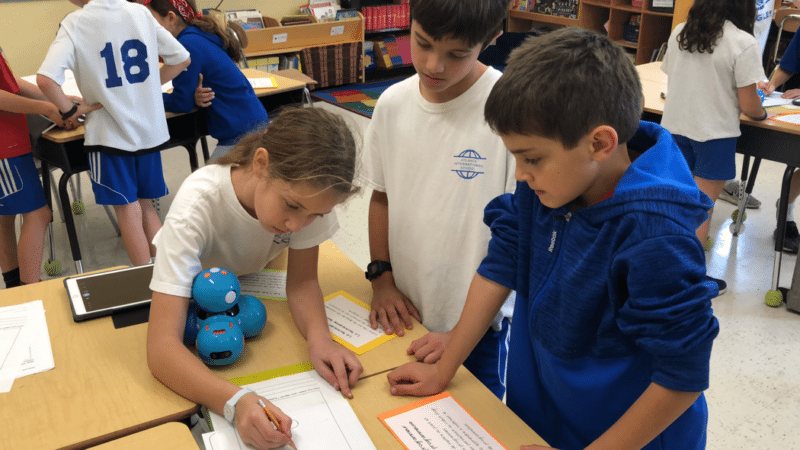
You’ve certainly thought outside the box with what you can do with robotics and coding for your fifth graders! What’s next?
Frederique: To go beyond, we will try to embed the robots in other units we have. We also teach English, German, Spanish, and French. The idea is to let the other language classes use it. The Spanish teacher will want our French students to come and teach her students about it first. Dash and Dot are going to get a lot of work in their classrooms!
Carine: I was thinking about how can I bring robots and science into a unit of history. We started reading a book about World War I, and I told them to listen carefully to the story because … we’d like to reenact the war in the trench. Two soldiers from two different sides of the world … [who realize] how much they are much alike. I thought, let’s use two Dash robots, and the students can build the trench.
Frederique: The students go with our crazy ideas!
Carine: Once we have all the ideas on paper, they’ll have to code it—they have to figure out how the soldier [Dash] will pass over the trenches. We have to calculate the path. We have a team that will build the trenches. Everyone will have a role. They’ll define who is doing what. Teamwork!
It seems like, more than any other lesson, teamwork, patience, and persistence play big roles in your coding journey. Both with working with the robots and each other.
Frederique: Through the process, we all find ways to work together. We guide the students through any conflicts so they can solve them. We lean on each other.
Carine: We realize that as a team we can achieve something. We have an African proverb we love to say to our students and each other all the time: “Alone I go faster. Together we go farther.” This is a big thing in our classroom. Yes, you can go fast, but you want to go farther. That’s what we want to do. Together we can solve problems.
Frederique: I think for both of us, this is really what matters to this world.
